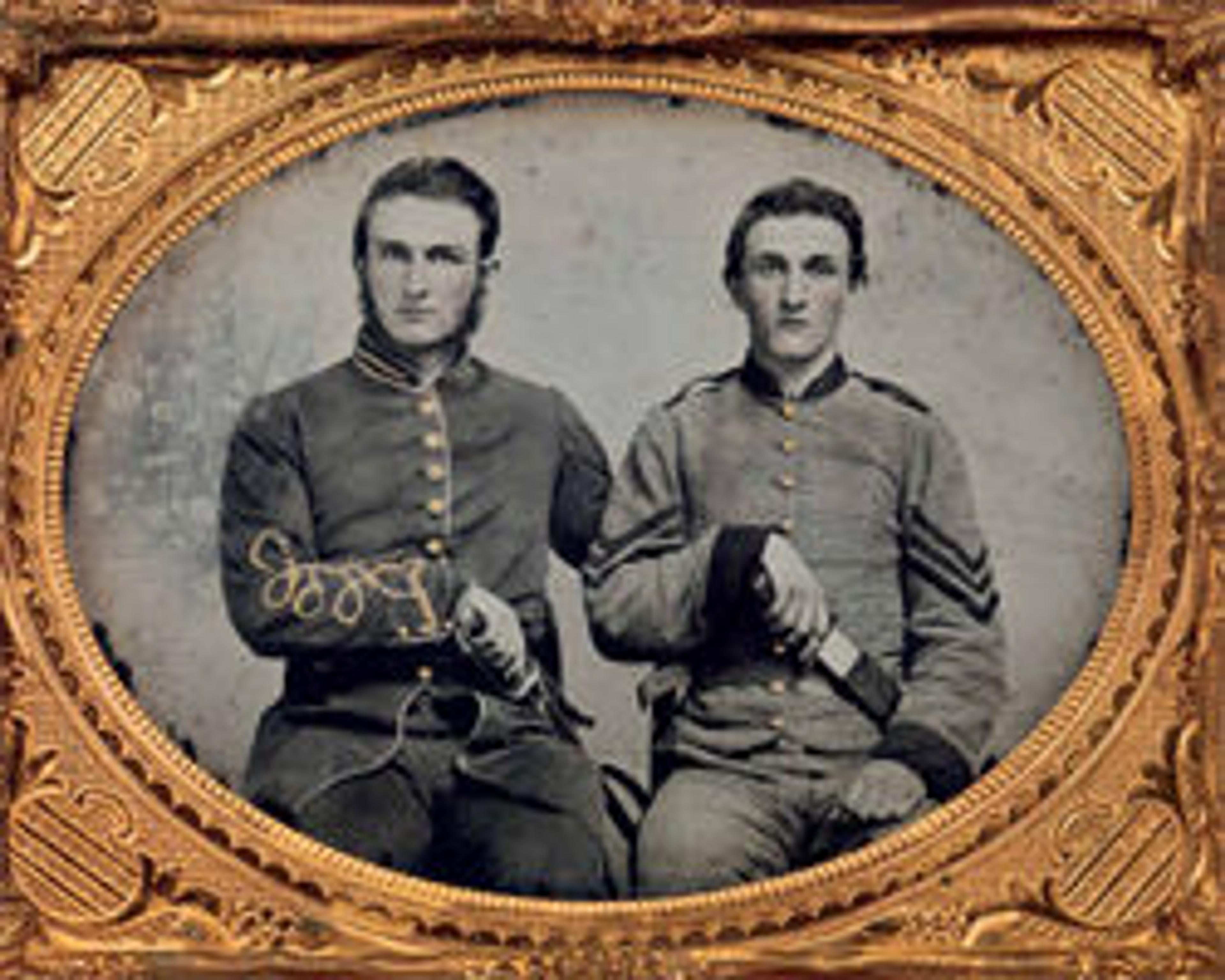[The Wilderness Battlefield, near Spotsylvania, Virginia]
The Battle of the Wilderness was fought May 5-7, 1864, in the same Virginia forest disputed a year before in the Chancellorsville campaign. When the soldiers took their positions in the woods, the ground was already littered with skulls. The densely wooded landscape made conventional field warfare impossible. Artillery was all but useless. Musketry fire splintered and gnawed the young trees. The thick undergrowth of thorny brambles, thickets, and roots, which made earthen defenses hard to build, could not itself stop stray bullets. Fighting virtually blind, soldiers often mistook their own forces for the enemy. Unable either to attack or to defend themselves, the armies of Robert E. Lee and Ulysses S. Grant fought to a bloody draw. Although no statistics of Confederate losses are known, Union losses at Wilderness were staggering: 2,246 killed, 12,137 wounded, and 3,383 missing--second only to Gettysburg in their numbers.
These three scenes were probably made after the war's end, when cleanup operations were under way. Formerly attributed to Alexander Gardner, these views are drawn from a group of twenty-eight that appear illuminated by an unearthly light. Printed from negatives that were probably unintentionally solarized during development, the photographs are tonally reversed, the black sky becoming an appropriate symbol for the terrible place called Wilderness.
These three scenes were probably made after the war's end, when cleanup operations were under way. Formerly attributed to Alexander Gardner, these views are drawn from a group of twenty-eight that appear illuminated by an unearthly light. Printed from negatives that were probably unintentionally solarized during development, the photographs are tonally reversed, the black sky becoming an appropriate symbol for the terrible place called Wilderness.
Artwork Details
- Title:[The Wilderness Battlefield, near Spotsylvania, Virginia]
- Artist:G. O. Brown
- Date:1866
- Medium:Albumen silver print from glass negative
- Dimensions:12.7 × 7.8 cm (5 in. × 3 1/16 in.)
- Classification:Photographs
- Credit Line:Gilman Collection, Purchase, The Horace W. Goldsmith Foundation Gift, through Joyce and Robert Menschel, 2005
- Object Number:2005.100.944.22
- Curatorial Department: Photographs
More Artwork
Research Resources
The Met provides unparalleled resources for research and welcomes an international community of students and scholars. The Met's Open Access API is where creators and researchers can connect to the The Met collection. Open Access data and public domain images are available for unrestricted commercial and noncommercial use without permission or fee.
To request images under copyright and other restrictions, please use this Image Request form.
Feedback
We continue to research and examine historical and cultural context for objects in The Met collection. If you have comments or questions about this object record, please contact us using the form below. The Museum looks forward to receiving your comments.
